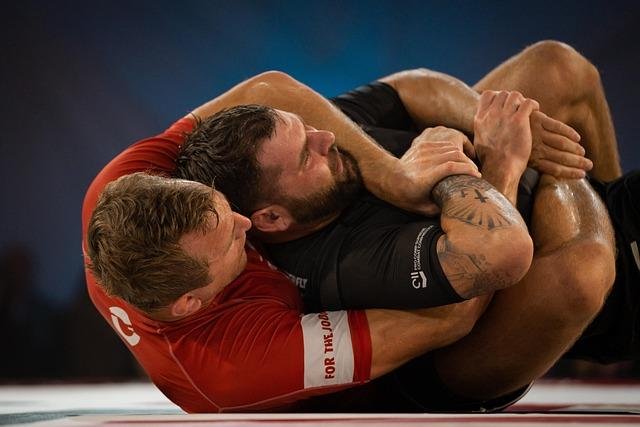Law enforcement agencies across the country are increasingly incorporating Brazilian Jiu-Jitsu into their training programs, recognizing its effectiveness in enhancing officer safety and control. As concerns over use-of-force incidents mount, Jiu-Jitsu offers tactical techniques that emphasize restraint and minimizing harm.This growing trend marks a meaningful shift in policing strategies, blending customary martial arts with modern law enforcement needs to better prepare officers for real-world encounters.
Table of Contents:
- Jiu-Jitsu Emerges as a Preferred Hand-to-Hand Combat Skill Among Officers
- Training Programs Emphasize Physical Control and De-escalation Techniques
- Departments Report Improved Officer Confidence and Community Relations
- Experts Recommend Integrating jiu-Jitsu with Existing Defensive Tactics Curriculum
- Concluding Remarks
Jiu-Jitsu Emerges as a Preferred Hand-to-hand Combat Skill Among Officers
Law enforcement agencies across the nation are increasingly recognizing the effectiveness of Brazilian Jiu-Jitsu (BJJ) as a practical and versatile hand-to-hand combat skill. Unlike traditional techniques that rely heavily on striking, Jiu-Jitsu emphasizes leverage, control, and submission holds, allowing officers to neutralize suspects with minimal force. This skillset is proving invaluable in de-escalating perhaps volatile situations while minimizing injury risks to both officers and civilians.
several departments have integrated Jiu-Jitsu into their training programs due to its numerous tactical advantages, including:
- Enhanced officer safety: The ability to control and restrain aggressive individuals reduces the likelihood of physical harm.
- Non-lethal engagement: Techniques focus on restraint and submission rather than strikes or weapons.
- Improved decision-making: Training fosters calmness under pressure and strategic thinking during confrontations.
With evidence mounting about its effectiveness, Jiu-Jitsu is fast becoming a cornerstone of modern law enforcement preparedness, reflecting a shift toward more skillful and measured approaches to public safety.
Training programs Emphasize Physical Control and De-escalation Techniques
Modern training programs for law enforcement agencies are prioritizing techniques that minimize physical harm while maximizing effective control.Central to these curricula is the integration of Jiu-Jitsu principles, which allow officers to subdue suspects through leverage and joint locks rather than brute force.This evolution reflects a broader commitment to reduce injury rates for both officers and civilians during confrontations, aligning with public demand for more accountable and humane policing methods.
Key components of these revamped training modules include:
- Enhanced situational awareness exercises aimed at recognizing triggers before escalation
- Use of positional control tactics that immobilize without excessive force
- Verbal de-escalation techniques combined with controlled physical responses
- Scenario-based drills that emphasize ethical use of force and legal considerations
By equipping officers with these specialized skills, law enforcement agencies are fostering safer interactions on the streets and promoting community trust. The blend of physical control and conflict resolution enhances decision-making under pressure, marking a significant shift in how force is applied across policing practices nationwide.
Departments Report Improved Officer Confidence and Community relations
law enforcement agencies integrating Jiu-Jitsu in their training programs have observed a notable boost in officer confidence. By mastering controlled techniques that emphasize leverage and precision over brute force, officers report feeling more prepared to manage high-tension encounters with de-escalation and safety in mind. This shift in approach not only enhances their tactical skillset but also significantly reduces incidents of unnecessary force, fostering a more professional and composed front-line presence.
The positive impact extends beyond internal benefits, as community members have expressed thankfulness for the improved interactions with officers trained in Jiu-Jitsu. Departments cite the following community-oriented outcomes:
- Enhanced trust and stronger bonds between officers and residents
- Increased transparency and accountability during public engagements
- Reduction in use-of-force complaints and related legal actions
- Greater willingness among citizens to cooperate during critical incidents
These results demonstrate that incorporating martial arts like Jiu-Jitsu into law enforcement curricula isn’t just an evolving trend — it’s a vital step in reshaping community policing for the better.
Experts Recommend Integrating Jiu-Jitsu with Existing defensive Tactics Curriculum
Leading law enforcement trainers emphasize the strategic advantage of blending Brazilian Jiu-Jitsu with established defensive tactics programs. This integration offers officers a more versatile skill set, enabling them to de-escalate confrontations effectively while minimizing harm to both suspects and themselves. By combining Jiu-Jitsu’s emphasis on leverage, control, and submission holds with traditional techniques, departments can foster safer outcomes during physical altercations.
Experts point out several key benefits to adopting a hybrid approach, including:
- Enhanced close-quarters control – Officers learn to manage encounters non-lethally through superior grappling skills.
- Improved officer safety – Techniques focus on reducing injury risks during physical enforcement activities.
- Greater adaptability – jiu-Jitsu’s fluid movements complement rigid defensive tactics, allowing quicker responses to unpredictable scenarios.
- Increased public trust – Using controlled, less aggressive methods can lead to better community relations.
Concluding Remarks
As Jiu-Jitsu continues to gain traction within law enforcement training programs nationwide, its emphasis on control, safety, and effective subduing techniques marks a significant shift in policing strategies. By equipping officers with these skills, agencies not only enhance on-the-ground safety but also foster a more professional approach to use-of-force incidents. With ongoing adoption and positive outcomes,Jiu-Jitsu appears poised to become a staple in law enforcement training for years to come.

